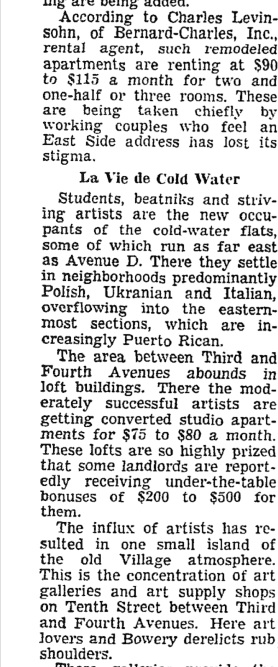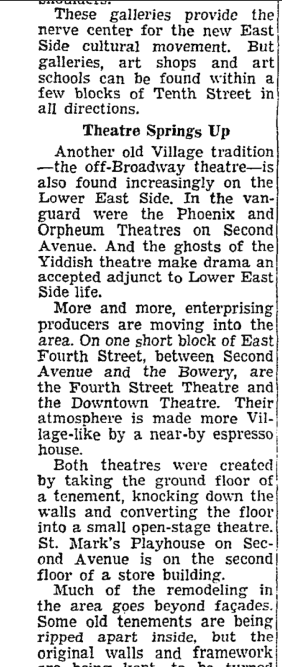The “East Village” Is Born, In Print

On February 7, 1960 the New York Times wrote an article discussing changes in Greenwich Village and the Lower East Side. Four years beforehand the El (above ground subway) had been removed from Third Avenue. With that barrier dismantled, Villagers from the west began to move east as “new shops, luxury and middle-income housing, and remodeled rooming-houses” began to appear. Increasing rents in Greenwich Village pushed residents, artists, writers, students and musicians to seek cheaper rents further east. The neighborhood was being rechristened “Village East” or the “East Village.” The New York Times story appears to be one of the very first, or possibly the first, recorded instance of the part of the Lower East Side north of Houston Street being referred to as “the East Village.”

Newcomers were arriving in the neighborhood not just from points in the Village further west, but from other parts of the city, country, and world. Long a mecca for immigrants from Europe and more recently for migrants from Puerto Rico, now the neighborhood was beginning to become a destination in its own right for beatniks and members of the emerging “counter-culture.” At the same time, landlords were gutting and remodeling existing housing stock to make a larger profit from this new influx.

The article also goes on to discuss the historical makeup of the neighborhood, the strong Polish, Ukrainian, and Italian communities that there is still evidence of today, as well as the Puerto Rican communities that make Alphabet City.

In addition to discussing the shifting dynamics of the neighborhood, the article also mentions how new galleries and theaters that were being created were helping “provide the nerve center for the new East Side cultural movement.”

The full article can be read here.
